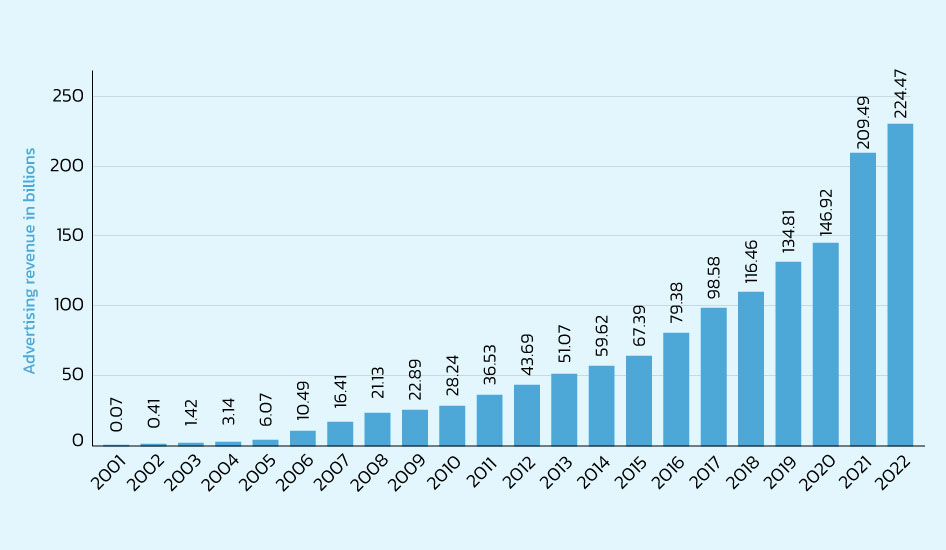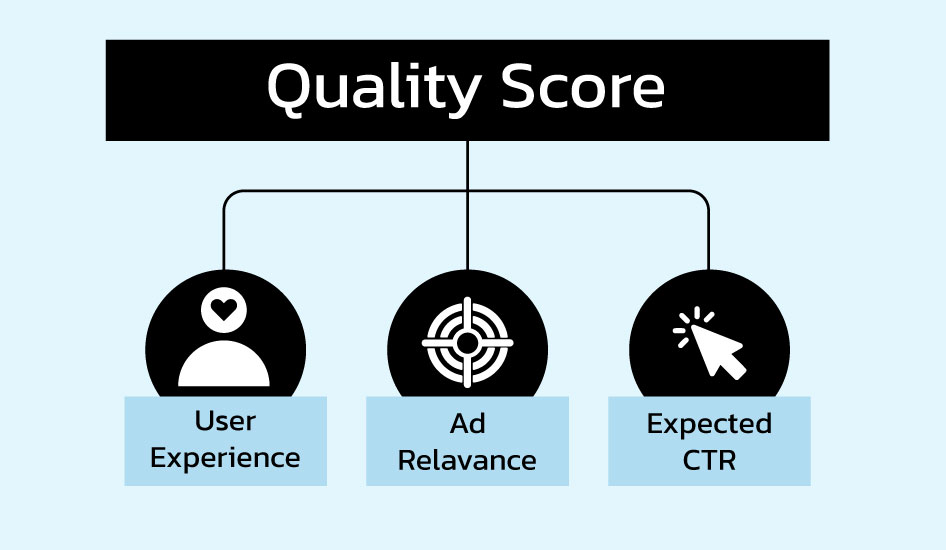How to Track & Measure Results of Google Ads Campaigns?

If you are working with Google Ads and running Google Ads campaigns, it is quite important to Track & Measure Results of Google Ads Campaigns. In 2022, Google’s advertising revenue was reported to have reached an impressive figure of USD 224.47 billion. This substantial sum is primarily generated by Google’s popular advertising platform, Google Ads.

With this platform, advertisers can easily promote their products or services across a vast network encompassing Google properties, affiliated websites, and mobile applications used by millions worldwide. By leveraging targeted campaigns, these businesses can reach a larger audience and increase the visibility of their brand. As such, Google’s robust advertising model has proven highly effective at generating significant revenue year after year.
Marketing agencies often face challenges when navigating the intricate landscape of Google Ads. Although they may possess extensive experience, the complexity of the platform coupled with a plethora of metrics can lead to “analysis paralysis.”
However, focusing on essential metrics is crucial to ensuring the optimal performance of clients’ campaigns while maximizing return on investment. It is important to remember that despite fluctuations within the industry, Google Ads remains the predominant player in pay-per-click advertising worldwide, claiming approximately 44.3% of global digital ad expenditures. Therefore, tracking & Measure the Results of Google Ads Campaigns for any successful agency is important. By adopting a clear and concise approach, even seasoned professionals will be better equipped to manage high-performing campaigns on Google Ads.
What Are Key Performance Indicators and the Importance of Tracking Them in Your Business?
Marketers need to monitor Google Ads-specific analytics in order to assess the efficacy of their online advertising and learn how different strategies affect results. Useful for making educated decisions, these analytics reveal things like click-through rates, acquisition costs, and conversion percentages.
Click-through rate (CTR), cost-per-click (CPC), quality score, average position, impression share, conversions, conversion value, and attribution windows are only few of the popular Google Ads data.
Marketers may learn more about the factors that contribute to successful campaigns by dissecting these core pieces of data. By keeping a close eye on vital statistics, they may fine-tune their marketing efforts and get the most out of their funds.
Google Ads tracking and measurement is essential for every company that wants to succeed and remain competitive in their respective sectors.
Marketers use ROI and CPC to evaluate the performance of their internet advertising campaigns. This piece will discuss the significance of these indicators, their meaning, and the implications they have for your company.
1. ROI Calculation
The return on investment may be easily calculated. To calculate the return on your advertising investment, just remove the cost of your advertisements from your overall income. Finally, double the percentage by 100 after dividing the final figure by the advertising budget a second time.
For example, Sarah spends $100 on Facebook advertisements and makes $200. Her calculation would look something like this:
Revenue – Cost = $200 – $100
($200/$100)*100 = 100%
Sarah achieved a 100% ROI. This means her ad spend generated enough income to cover all marketing expenses, providing her with a profit of $100.
Positive and Negative ROIs
The significance of having a high ROI metric lies in its ability to measure whether an ad campaign has generated more income than it consumed. Anything above zero indicates a profitable outcome, whereas values below zero indicate a loss. While an initial period of declining ROI isn’t necessarily caused for concern, it could suggest your campaign needs refinement before showing significant gains.
2. Understanding CPC Metric
Next, we focus on understanding the cost-per-click (CPC) metric. To compute this figure, divide your overall ad spend by the total number of clicks received. Here’s how Carlos calculates his CPC:
Total Spend / Total Clicks = $100/50
$100/50= $2.00
In this scenario, his estimated CPC is $2 per click. The CPC metric tells us the monetary value of each visitor arriving on our site through paid channels. It enables advertisers to assign a dollar value to various keywords, identifying which ones generate higher-quality traffic compared to others.
Remember, just because your CPC increases doesn’t always indicate a problem. Suppose your campaign yields improved results compared to past periods, even if your CPC rises. In that case, it can still indicate strong performance levels.
A rising trend may not negatively affect the campaign since the changes could increase engagement and potentially more purchases. On the other hand, sudden increases might warrant further analysis to identify discrepancies within the analytics data.
How do you determine the effectiveness of an online advertising campaign or personal ad?

There are several factors to consider when evaluating the quality of an ad or campaign. When you Track & Measure Results of Google Ads Campaigns, One of the simplest methods is utilizing Google’s Quality Score feature. This rating represents how well-aligned your chosen keywords and adverts are regarding relevancy to potential clients.
You can locate the Quality Score information under your Google Ads account’s “Keywords” section. If it doesn’t appear automatically, you can include the column manually by visiting “Columns.”
Why should you focus on Quality Score? Its influence extends beyond simply measuring the success of your campaign or ad. High scores imply your content is relevant to customers and result in reduced costs-per-click (CPC), enhanced ad positions, and increased chances of conversion. Conversely, poor ratings have opposite effects, resulting in higher CPCs and diminished performance.
While the primary aspect of Quality Score affects ad effectiveness, there are additional measures to assess campaign excellence. First, inspect the Click-through Rate (CTR).
Low CTRs generally point to two issues: 1) mismatches between selected keywords and the customer wants, or 2) ad copies fail to pique users’ interests or prompt action. In either case, addressing these concerns improves campaign performance and drives better outcomes.
Another vital factor is Bounce Rate from the Landing Page. Even though your ad achieves a high CTR, users tend to leave the landing page immediately after arrival. Disparities like this signify deficiencies between user expectations and the delivered content or structure of the landing page itself.
Enhancing design elements, clarity, and call-to-action (CTA) buttons helps reduce bounce rates, fostering more effective ad interactions and conversions.
By analyzing Quality Scores, CTRs, and Bounce Rates, among other useful indicators, marketers can fine-tune their online ad strategies and optimize campaigns for maximum efficiency and Return on Investment.
Conclusion
Advertising presents the opportunity to gain exposure for products, services, or content offerings while targeting specific audiences most likely to show interest.
As a business, when track & Measure the Results of Google Ads Campaigns through key metrics such as ROI and CPC offers valuable insights that help guide decisions affecting future ad spend.
By paying close attention to these metrics and making informed adjustments based on their behavior, advertisers stand to improve the success rates of their campaigns over time, ultimately leading to stronger brand visibility and sustained growth.







